In the least populated prefecture of Japan lies the country’s largest dunes. Tottori prefecture, located along the coast of the Sea of Japan, is a landscape of incredible beauty that will take your breath away in more ways than one. From sandy shores to dramatic mountain ranges, and a culture steeped in tradition, this coastal prefecture is a treasure trove of impressive nature and unforgettable experiences.

The rabbit is a popular symbol of Tottori. You can find many small rabbit statues at the Hakuto Shrine, where the famous Hare of Inaba legend originated.
What makes it even more charming is the lack of tourist crowds. Although it is only a convenient two-and-a-half-hour train ride from the bustling city of Osaka, Tottori is delightfully quiet and unhurried. Come with us on a slow travel journey through this hidden gem of a destination.
Discover the largest dunes in Japan
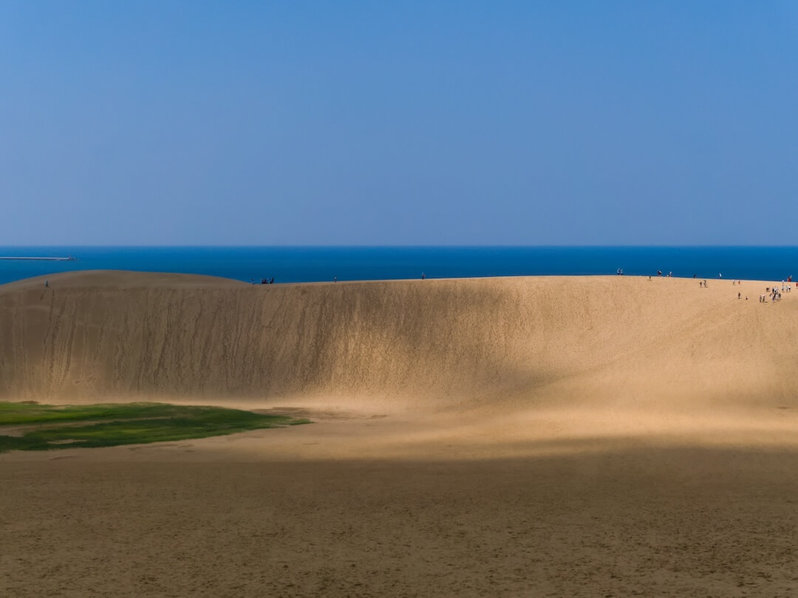
The Tottori sand dunes have been a designated national natural monument of Japan since 1955. (Photo from: PhotoAC)
Nothing quite prepares you for the grandeur of the Tottori sand dunes. The vastness of the dunes looms into sight as you walk up the steps that lead to one of the city’s most famous attractions.
The Tottori sand dunes are a natural phenomenon formed thousands of years ago. Weathering caused granite gravel from the Chugoku mountains to flow into the sea, carried by the Sendai River. Over time, the sediments are swept up along the shoreline by strong sea currents and carried further inland by wind, forming the magnificent dunes you see today.
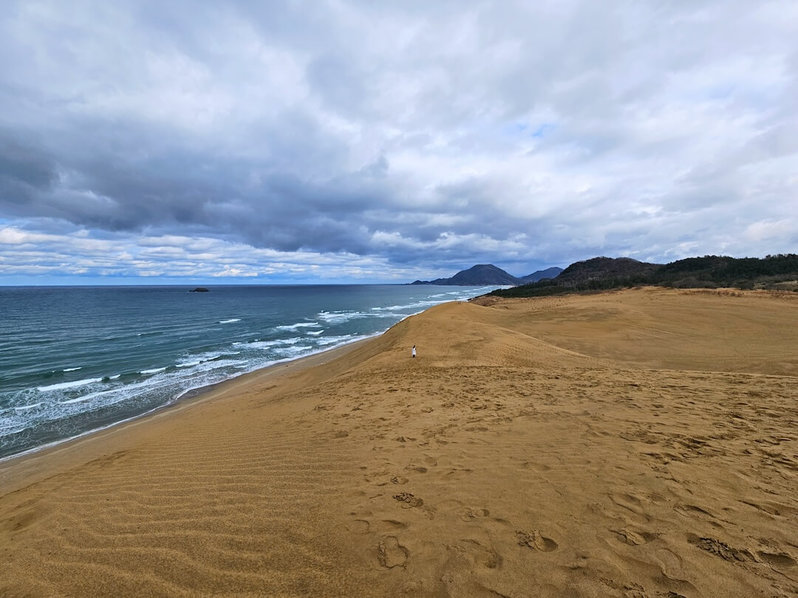
Explore the unique geographical features of Tottori sand dunes, where the sprawling expanse of sand meets the sea and the skies.
It is both a humbling and surreal experience to witness this extraordinary work of nature.
As the seasons change, so does the allure of the dunes. In winter, the sandy landscape gets blanketed in a layer of snow and turns into a dreamy white wonderland. During springtime, flowers erupt and add a touch of colour to the endless wind-rippled dunes. Various activities such as sandboarding and camel riding are also available during the warmer months.
Hop on a vintage train to Wakasa

The interior of the Wakasa sightseeing train features wood panelling and old-school booth seats.
Scenic train rides appeal to travellers who are drawn to the romance of this old-world mode of exploration. The clickety-clack of the train wheels and changing scenery is a travel experience that brings inexplicable joy, especially if you are a train enthusiast. If you have some time in Tottori, the retro Wakasa Railway is a train adventure to add to your itinerary.
Wakasa Railways, opened in 1930, is a local railway that connects Koge and Wakasa in Tottori prefecture. From Koge station, the 35-minute journey passes through idyllic countryside landscapes before arriving at a gorgeous wooden station that is reminiscent of the Showa era (1926–1989). There is also a cosy waiting room and cafe here, should you want to languidly watch the trains go by.
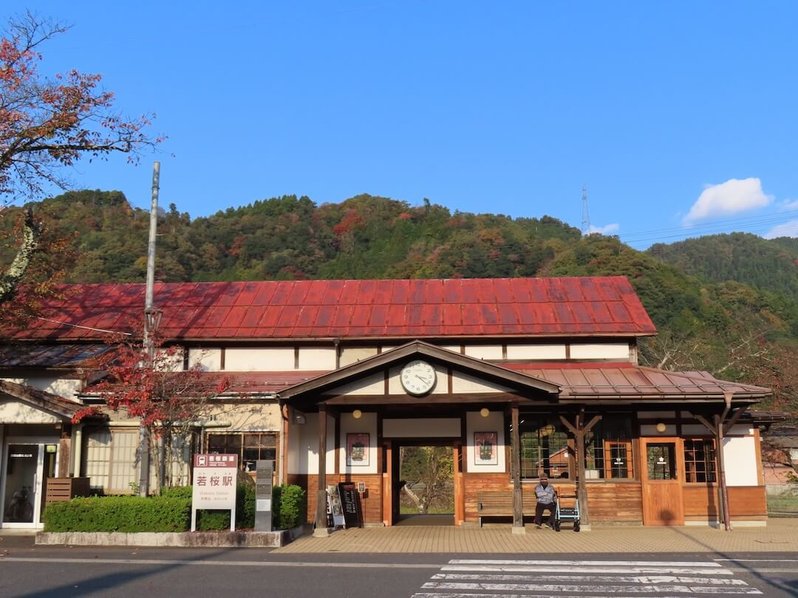
At Wakasa station, you can view a steam locomotive up close and even have a go at operating its manual turntable. (Photo from: PhotoAC)
Wakasa town itself is small but worth a visit for its friendly locals and lush nature spots. The old townscape is intensely beautiful, and there is no lack of interesting shops that sell traditional local crafts and specialty food products to keep you entertained.
Explore the old merchant quarters of Kurayoshi
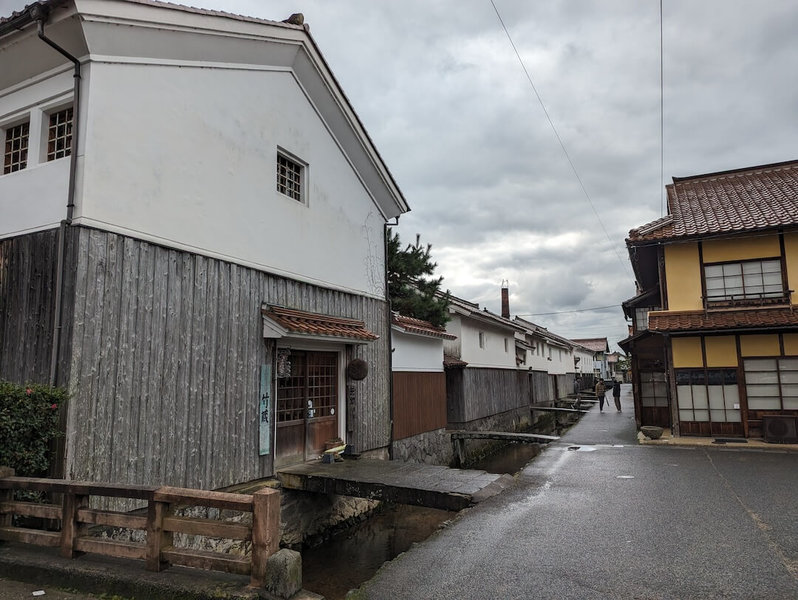
A stroll along the Shirakabe warehouses almost feels like time has stood still.
Step into a quaint townscape of white-walled warehouses and wooden buildings at the historical quarters of Kurayoshi City – once a flourishing merchant town during the Muromachi period (1336-1573). Today, there are no wealthy traders but curious travellers drawn to its medieval atmosphere.
The well-preserved streets and architecture still retain a nostalgic ambience from the Edo and Meiji periods (1603-1868 and 1868-1912 ). Traditional white-walled warehouses line the canal, accessible via small stone bridges. Its old wooden townhouses with sliding doors and red-tiled roofing are a photographer’s dream as well. Once occupied by soy sauce distilleries and breweries, these refurbished buildings now house trendy cafes, galleries, and shops selling local specialties.

The old shopping streets offer a retrospective glimpse into Kurayoshi’s past.
Go on a hunt for retro shop signs from the Showa era and buy some local snacks to enjoy while you explore the picturesque streets. The best part? There are no throngs of tourists that may get in your way.
With only a handful of people wandering around, this wonderfully quiet area is perfect for spending a couple of peaceful hours.
Soak in Misasa’s radon-rich hot springs
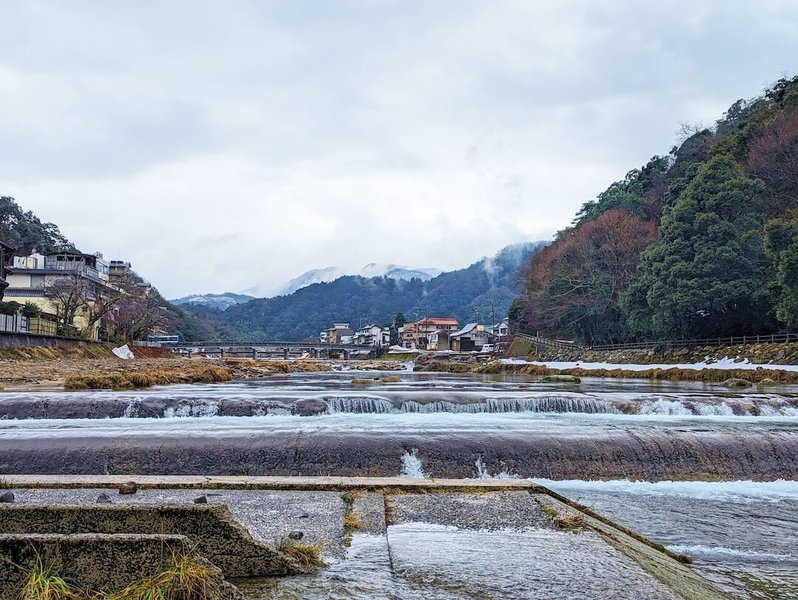
Misasa entices visitors with therapeutic hot springs and a tranquil mountain atmosphere.
To rejuvenate your weary body and mind from modern life fatigue, head over to the onsen town of Misasa for a healing soak. Misasa Onsen is an ancient healing hot spring with a history of over 850 years. Containing a high concentration of radon, the mineral-rich water is believed to enhance your immune system and boost your body’s metabolism.
To absorb the most of the hot spring’s curative powers, visitors are encouraged to bathe in it, inhale the steamy vapour, and even take a sip of the water.

At the base of the dignified granite Misasa Bridge (built in 1933) is the town’s open-air public bath.
Several hot spring facilities cater to day-trippers but it may be a better idea to stay a night in this charming Showa-esque onsen town, then wake up to fresh air and a scenic view surrounded by mountains. Before the day trippers arrive, you can enjoy the solitude of exploring the town’s attractions and even join the locals for an open-air bath in the river.
Nature lovers can also explore hiking trails, go forest bathing, or climb up the sacred Mount Mitoku.
Go stargazing at Mount Daisen
One of western Japan's best-kept secrets is Mount Daisen, the highest peak of the Chugoku mountain range. Standing at 1,729 meters high, this impressive mountain towers majestically over Yonago city of Tottori Prefecture, and offers a range of exciting activities for both adrenaline seekers and leisure explorers.

Low light and air pollution mean a stunning star-studded night sky with incredible visibility. (Photo from: PhotoAC)
One experience you must try here is stargazing. From high up in the skies on Mount Daisen, the night sky is wonderfully clear and ideal for spotting constellations, shooting stars and even the Milky Way.
Once the winter season fades away, visitors have the chance to partake in a starry sky photo tour held at Mount Daisen. The activity includes a presentation of star constellation information and sharing of some spectacular night sky photos taken around the San'in region by famous photographer Takashi Karaki. However, the action truly begins during the personalised photo shoot session on-site!
The best way to explore Tottori’s lesser-known sights is to rent a car and go on a self-drive journey – giving you the utmost flexibility to explore at your own pace. If driving is not an option, there is a convenient Kirinjishi tourist bus that brings you around the major attractions located within the city. Either way, there will be no noisy tourist crowds and long queues to dampen your exploration mood.

